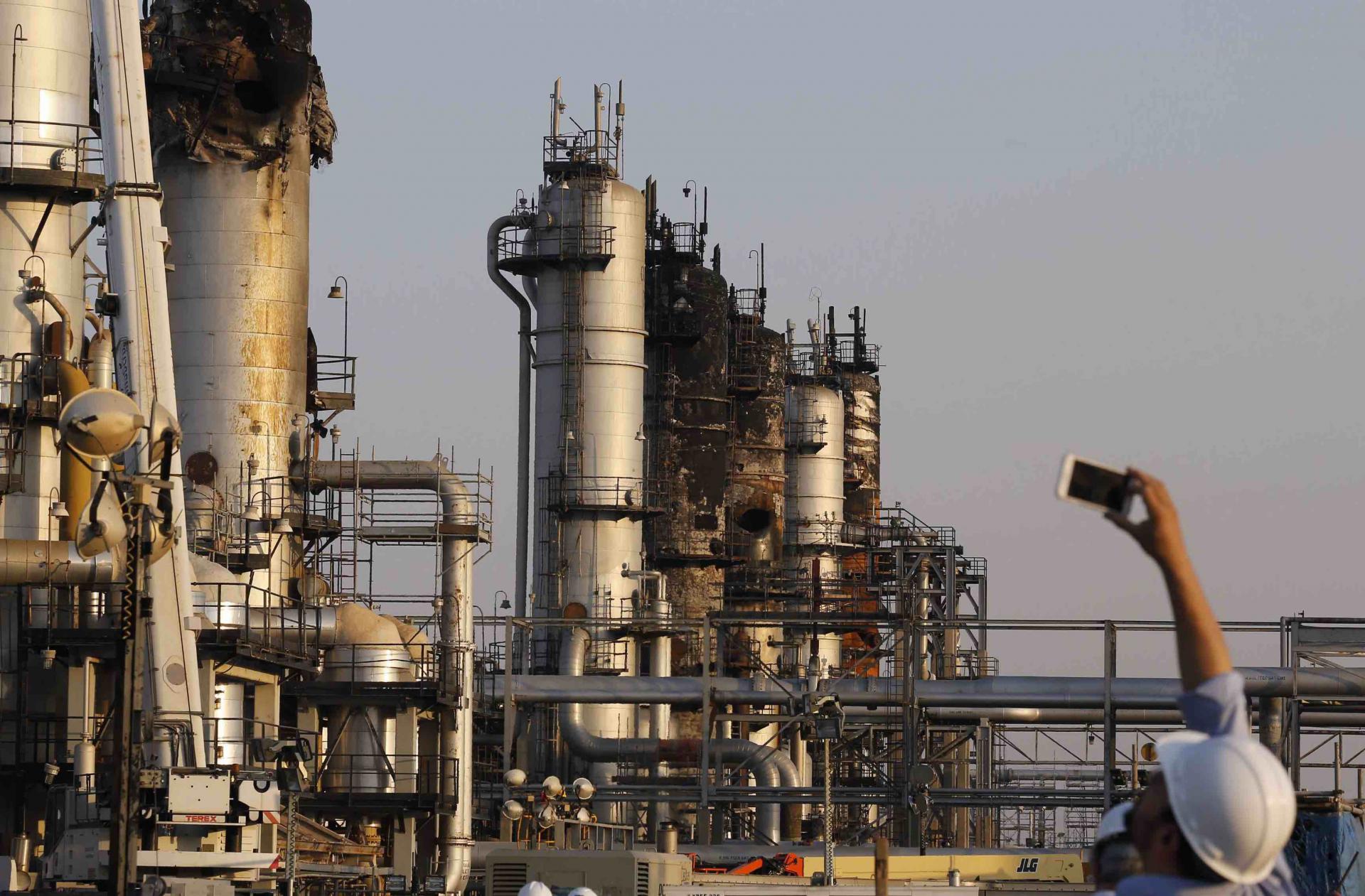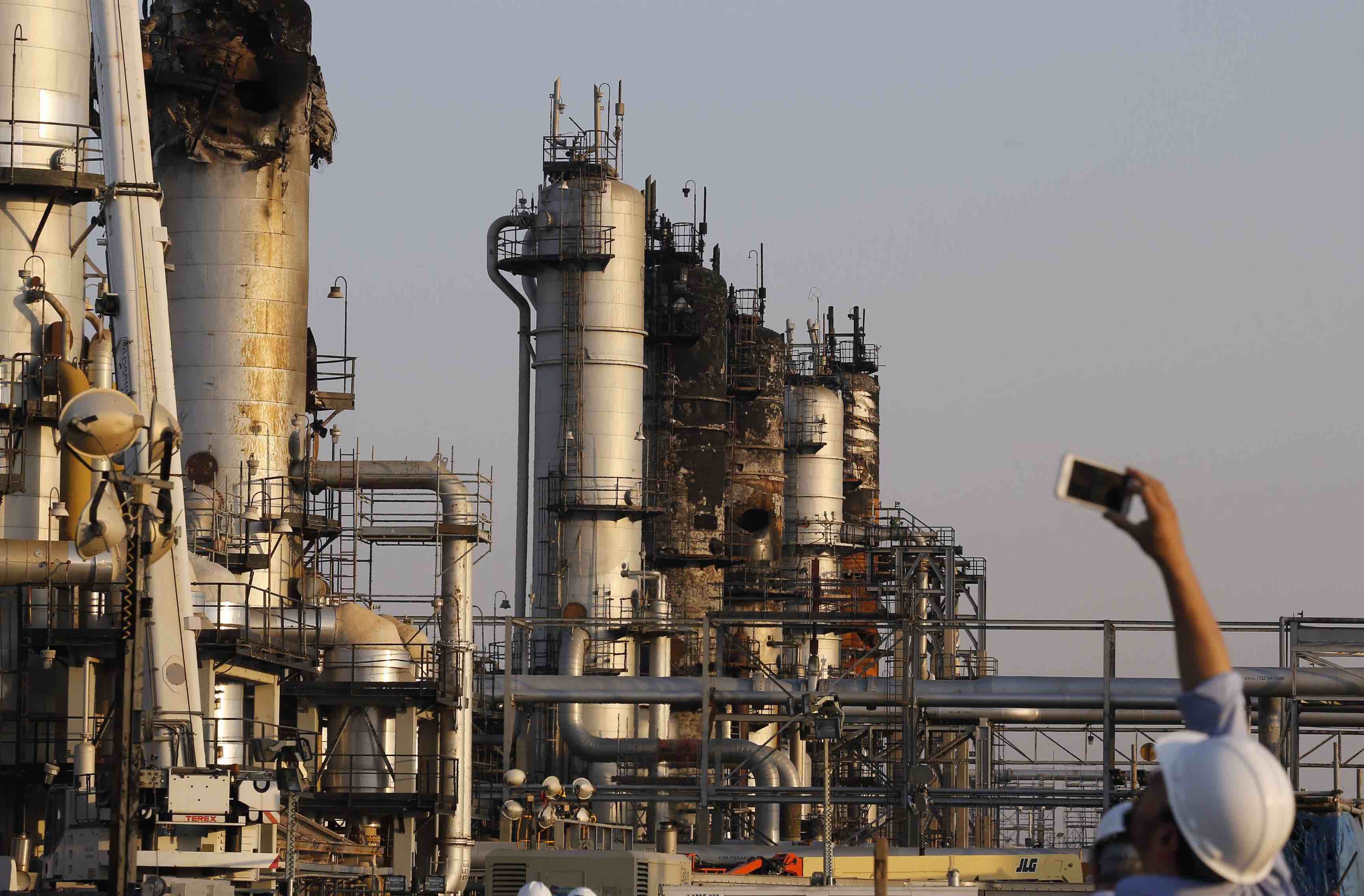‘Locked and loaded,’ US still reluctant to directly challenge Iran
The coordinated and precise drone and missile attacks on two of the most critical pieces of oil infrastructure in Saudi Arabia, which immediately halved the kingdom’s crude production and knocked out 5% of global oil supplies, raise a large question about Riyadh’s long-standing claim of being the world’s most reliable crude supplier.
The September 14 attacks on Saudi Aramco’s oil processing facility at Abqaiq and the nearby Khurais oil field upended oil markets — with crude prices spiking nearly 15% — and added a new risk element for investors to consider as they weigh participation in the much-anticipated Saudi Aramco initial public offering (IPO).
Reassurances from the new Saudi oil minister and Saudi Aramco chairman at a news conference September 17 that Saudi oil production would be fully restored by the end of September and that the IPO has not been derailed prompted oil prices to retreat 6% from their highs the day before.
The hit on the Saudi Aramco facilities, however, dramatically highlights the vulnerability of Saudi energy security and therefore global energy security. The psychological aspect of that knowledge is likely to affect oil markets and the investment community long after the lost Saudi crude production recovers.
Saudi Oil Minister Prince Abdulaziz bin Salman bin Abdulaziz and Saudi Aramco on September 15 said the attacks had cut Saudi oil production by approximately half to around 5.7 million barrels per day (bpd). Saudi oil output comprises 10% of global crude supplies and the kingdom is the world’s largest oil exporter.
Prince Abdulaziz, appointed oil minister on September 8, stated at the news conference that 50% of the knocked out production had been restored within two days and that Saudi oil output would fully recover by the end of September, when production capacity will total 11 million bpd and that the capacity would rise to 12 million bpd by the end of November.
He indicated that Saudi Aramco would draw from its crude stocks to ensure its commitments to customers are fully met.
Saudi Aramco Chairman Yasir al-Rumayyan sought to ease investors’ fears amid rumours that the sale of up to 5% of Saudi Aramco may be postponed because of the attacks. Rumayyan said: “The IPO is a commitment by the shareholder, the government of Saudi Arabia, and we think the IPO will continue as is. We are not going to stop anything.”
Oil markets had built in a geopolitical price premium based on escalating tensions between Saudi Arabia and Iran as well as the ongoing brinkmanship between Washington and Tehran.
Iran-backed Houthi rebels in Yemen claimed responsibility for an attack on a Saudi Aramco pipeline in May and that same month Tehran was believed to have been behind the bombings of four oil tankers, two of which were Saudi-owned.
There is, however, new volatility in the oil markets adding a higher price premium: the Abqaiq and Khurais attacks revealed the surprising vulnerability of essential Saudi oil infrastructure and there are concerns that the strikes could provoke US retaliatory action against Tehran that could lead to a wider military conflict.
Riyadh and Washington are gathering evidence, seeking to prove that dozens of drones and missiles were launched into the kingdom from Iranian territory near Iran’s southern border with Iraq, despite Houthi rebels’ quick claim to have conducted the attacks from Yemen.
The price for US benchmark crude West Texas Intermediate experienced its largest daily jump in ten years on September 16, settling at $62.90 a barrel, up 14.7% for the day. UK benchmark crude Brent recorded its largest daily percentage gain ever the same day, with its price up 14.6% to $69.02 a barrel.
The attacks on the Abqaiq processing facility and Khurais oil field were strategic. The Saudi processing plant is the world’s largest, taking in approximately two-thirds of the kingdom’s oil production, specifically from the Ghawar, Shaybah and Khurais fields, and refining and cleaning those supplies so that impurities such as sulphur and sand are extracted.
The Khurais oil field is the Gulf country’s second largest, with a production capacity of 1.5 million bpd.
The exposure of the Abqaiq facility to sabotage or attack has long been a concern not only of successive Saudi governments but US administrations as well. After the September 14 bombings, Bob McNally, a former adviser to US President George W. Bush, tweeted: “Especially after 9-11, few things preoccupied me more while serving on the White House National Security Council than the security [of] Abqaiq, the most important facility on the planet few had heard of.”
In February 2006, Saudi security forces thwarted an al-Qaeda suicide car bomb attack at the gates of the Abqaiq processing plant, the news of which caused oil prices to jump $2 a barrel.
The Abqaiq and Khurais strikes expose a serious flaw in the kingdom’s ability to protect its most important energy infrastructure, made all the more surprising given the enormous amount of money Riyadh directs towards defence — particularly its air defence systems. The Stockholm International Peace Research Institute reported that Saudi Arabia ranked first in military spending as a percentage of GDP in 2018.
That high degree of spending was not lost on Gary Grappo, a former US ambassador to Oman, who, in a CNBC interview September 17, said: “I think the Saudi leadership has a great deal of explaining to do that a country that ranks third in terms of total defence spending… was not able to defend… its most critical oil facility from these kinds of attacks.”
Jareer Elass is a Washington-based energy analyst, with 25 years of industry experience and a particular focus on the Arabian Gulf producers and OPEC.
This article was originally published in The Arab Weekly.







